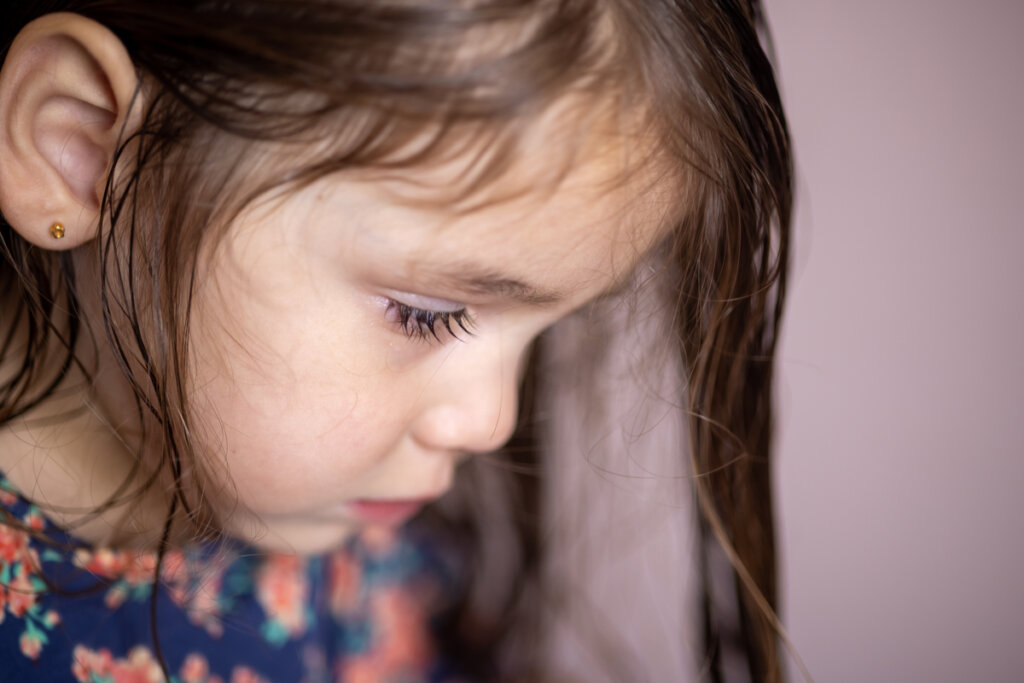Reactive Attachment Disorder in Adulthood


Written and verified by the psychologist Ebiezer López
Reactive attachment disorder is a condition that affects how people bond with others. It’s usually diagnosed and treated during childhood when its symptoms are most apparent. However, there are cases in which this isn’t the case, and the consequences of reactive attachment disorder are seen in adults.
The positive news is that it’s possible to work on problems associated with attachment in adults. Thus, if we learn to recognize the effects of this condition in adulthood, we can detect it and seek the necessary help.
Symptoms of reactive attachment disorder
Reactive attachment disorder is a rare problem that usually develops during the first years of life. During this stage, infants develop emotional bonds with their primary caregivers. This is important because depending on the type of experience the child has with their caregivers, they develop different attachment styles.
There are instances in which caregivers act negligently or abusively toward infants or separate from them abruptly. It’s possible that this ends up being the origin of reactive attachment disorder. This is usually expressed in one of two ways:
- Inhibited. Children with this variation refuse to initiate or maintain contact with anyone. They’re seen as shy and unresponsive when spoken to, and their emotional reactions are minimal. Furthermore, they may have episodes of fear, sadness, crying, or irritability that appear without explanation.
- Uninhibited. These children show excessive trust toward all adults, even strangers. Their behavior gives the impression that they feel really familiar with anyone, even if it’s someone they’ve just met.

Consequences of reactive attachment disorder in adulthood
In children, these behavior patterns are formed during the first five years of life. It’s common for this condition to occur in orphaned children, or infants from problematic homes in which there’s violence or substance abuse.
However, the condition isn’t always diagnosed or treated appropriately. That’s when the consequences of reactive attachment disorder carry over into adulthood.
Identity problems
Hoksbergen and ter Laak (2020) conducted a study on behavioral problems in adults who’d been adopted by foreigners when they were children The authors noted that, in several cases, it was possible to diagnose reactive attachment disorder in these adults. Thus, one of the effects that researchers were able to observe in people with the disorder was that they often feel that they don’t belong to their family groups.
The researchers pointed out that, during childhood, the family is the reference group for the child’s identity. Therefore, adopted adults who have to internalize and integrate a complex reality may have problems with their own identity.
Furthermore, participants in the study often researched their background, with many reporting that they identified more with the culture of their native country. In effect, it became a kind of lost paradise.
Social isolation and distrust
As explained earlier, children with reactive inhibited attachment disorder tend to avoid social relationships. If this isn’t corrected, it’s likely to end up transcending into their adult life. Consequently, they’ll only manage to build superficial relationships.
These limitations translate into great difficulties in generating and maintaining meaningful relationships with others. It reinforces their idea that other people are bad people and only care about themselves.
Overconfidence and early bonding
People suffering from this condition are characterized by trying to establish trusting emotional relationships extremely quickly. They go through the usual phases of forming a relationship at a much faster rate than a person without the disorder would.
The fact that they don’t take the time to assess the social ground they are on leads to many disappointments for them. For example, they may expect the same from a person with whom they feel in tune, but whom they’ve only known for two weeks, as from a friend they’ve known for a long time.
This pattern of attachment leads them to be too demanding in relationships since they expect too much from others really quickly. With this type of dynamic, it’s usual that they encounter some type of rejection, since the other person can feel really overwhelmed by their behavior.
Lack of empathy
Due to their difficulties in establishing emotional bonds with others, it’s common for sufferers to have a hard time understanding the emotions of others. Hall and Geher (2003) conducted research on personality characteristics in reactively attached children. It was concluded that participants with reactive attachment disorder had lower empathy scores than the control group.
Emotional problems
This condition presents affective instability and problems in the regulation of emotions. In a superficial analysis, they might seem to be happy and calm people. However, it’s not uncommon for them to overreact to any event that goes against their wishes.

Finally, one of the consequences of reactive attachment disorder in adulthood is the great suffering it produces, both in the sufferer and their environment. Indeed, the lack of ties, to which must be added an extremely disabling emotional instability, usually leads these patients to seek help. It’s at this point that the disorder can be diagnosed and worked on with different strategies.
All cited sources were thoroughly reviewed by our team to ensure their quality, reliability, currency, and validity. The bibliography of this article was considered reliable and of academic or scientific accuracy.
- Hall, S. E. K., & Geher, G. (2003). Behavioral and personality characteristics of children with reactive attachment disorder. The Journal of Psychology, 137(2), 145-162.
- Vasquez, M., & Stensland, M. (2016). Adopted children with reactive attachment disorder: A qualitative study on family processes. Clinical Social Work Journal, 44(3), 319-332.
This text is provided for informational purposes only and does not replace consultation with a professional. If in doubt, consult your specialist.








